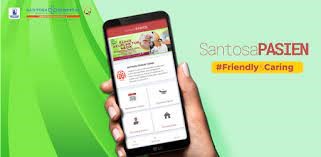Application Users Experiences on The Santosa Features of Bandung Patients During The Covid-19 Pandemic
Pengalaman Pengguna Aplikasi Pada Fitur Santosa Pasien Bandung Saat Pandemi Covid-19
DOI:
https://doi.org/10.21070/kanal.v10i2.1580Keywords:
Santosa Patient Application, Experience, Features, Covid-19Abstract
During the Covid-19 pandemic, many people are worried about coming directly to the hospital with several purposes, one of which is for outpatient registration. But with the application of patients made to make it easier for the people of Bandung and outside the city of Bandung to register outpatient, know room information, doctor information, registration history, and the results of laboratory and radiology examinations. This study aims to find out and describe the response of users of the Santosa patient Bandung application in using the patient santosa application at the time of the Covid-19 pandemic. This research uses phenomenological studies which are viewpoints that focus on individual experiences. The theory used in this study is interactional view and uses qualitative approaches. The results of this study show that the experience of patients' Sentosa application users assumes that the patient Sentosa application is very helpful and makes it easier for patients during the Covid-19 pandemic to register for outpatient, know room information, doctor information, registration history, and the results of Laboratory and Radiology Examinations and features that are accessed very easily understood by some users. Although the features are sophisticated and complicated, some Sentosa application users also assume that there are shortcomings that have, while some factors that become deficiencies or obstacles include: age, system errors, and lack of socialization about this Patient Santosa application.
References
Parwanto M. (2020) Virus Corona (2019-nCoV) penyebab COVID-19. J Biomedika Kesehata 3(1):1-2.
Griffin. (2012). A first look at communication theory. New York: McGraw-Hill Companies., 182.
Hospital, S. (2006). Santosa Hospital Bandung Central. https://www.santosa-hospital.com/v1/hospital/SHBC. Diakses pada 20 Januari 2022.
Hospital, S. (2019). Santosa Pasien. https://www.santosa-hospital.com/v1/hospital/SHBC. Diakses pada 20 Januari 2022.
Kartika, N. E., & Hidayat, D. (2021). West Java Regional Cultural Management UPTD in Designing Virtual Art Performances During the COVID-19 Pandemic. Kanal: Jurnal Ilmu Komunikasi, 9(3), 108–112. https://doi.org/10.21070/kanal.v9i3.1570
Littlejohn, S. W., & Karen, A. F. (2009). Teori Komunikasi (Terj.). Jakarta: Salemba Humanika.
Meisa, W. (2014). Analisis Kesalahan Penggunaan Keigo Pada Pembelajar Bahasa Jepang : Studi Deskriptif pada Mahasiswa Tingkat III Jurusan Pendidikan Bahasa Jepang Universitas Pendidikan Indonesia Tahun Ajaran 2012/2013. Universitas Pendidikan Indonesia.
Moenir, H. A. . (2002). Manajemen Pelayanan Umum di Indonesia. Jakarta: Bumi Aksara.
Moleong, Lexy, J. (2011). Metode penelitian Kualitatif Edisi Revisi. Bandung: PT. Remaja Rosdakarya.
Mukarom, Z., & Laksana, M. W. (2016). Membangun Kinerja Pelayanan Publik. Bandung: Pustaka Setia.
Sahar, A. (2014). Fenomena New Media. Jakarta :Universitas Indonesia.
Shelly, Chasman, V. (2009). Discovering Computers. Jakarta : Salemba Empat.
Supriyanto, A. (2005). Pengantar Teknologi Informasi. Jakarta : Salemba Empat.
Watt, J. H., & Sjef, A. V. den B. (1995). Research Methods for Communication Science. Boston: Allyn and Bacon.
Watzlawick, P. (1967). Pragmatics of Human Communication. New York: W. W. Norton & Company, Inc.
Wijayanengtias, M., & Claretta, D. (2020). Student Perceptions of Online Learning During the Covid-19 Pandemic. Kanal: Jurnal Ilmu Komunikasi, 9(1), 16–21. https://doi.org/10.21070/kanal.v9i1.685






